A Beautiful Embroidered Beaded Bodice

This is a full bodice, beaded and partially constructed, that I recently was given. The variety of pattern here, makes it easy to miss the astonishing amount of detail contained within the piece.
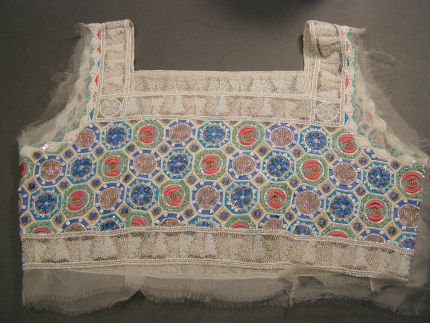
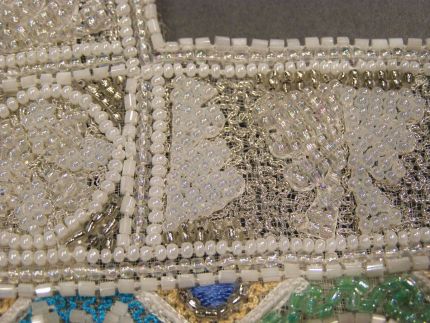
I’ll begin at the top of the piece, starting with the border.
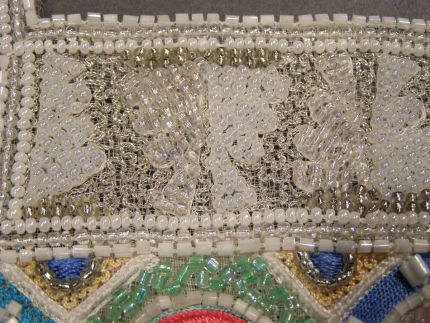
Look at the detail–I love the silver stippling stitch, done with tambour embroidery, that fills in behind the main motif done from seed beads. This stippling is so fine and small that it just shimmers.
This is the work from the back. I like looking at the back as much as the front.
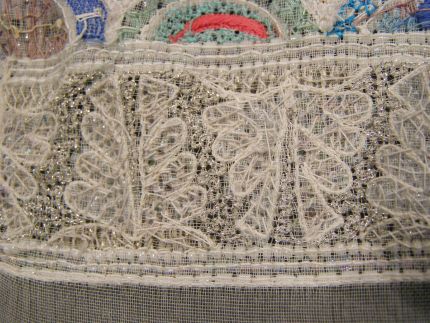
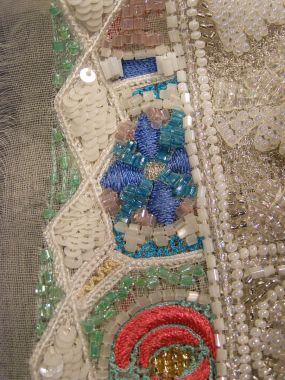
This is a detail of the armhole–I imagine this piece had matching sleeves, as there’s no hard edge to make a proper border finish. This is the only place on the piece where there is sequin work–I imagine the sleeves had more sequin work on them.
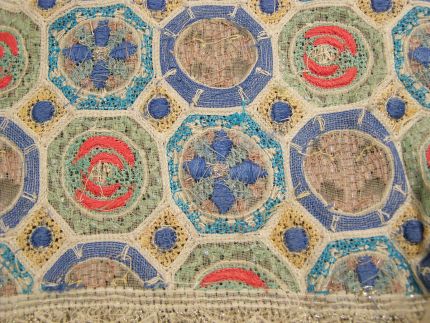
The body is a patchwork of motifs separated by a grid of white embroidery. This is a shot from the back.
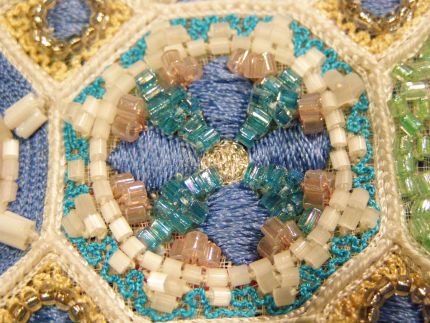
A close-up of one section, showing the mass of detail in such a small space.
Another one of the motifs, showing tambour satin stitch embroidery.
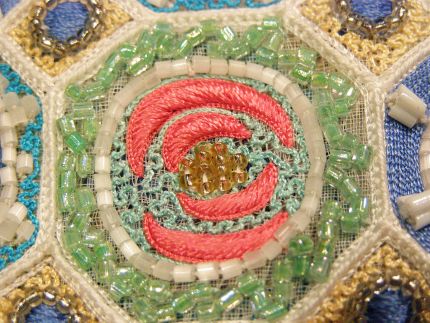
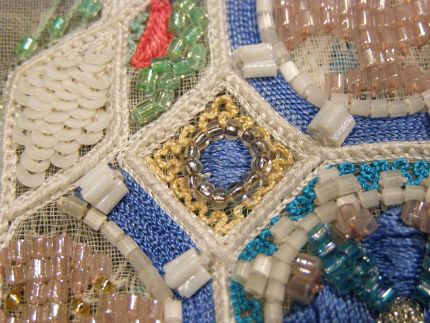
And the intersections in the grid, showing more of the fine stippling stitch.
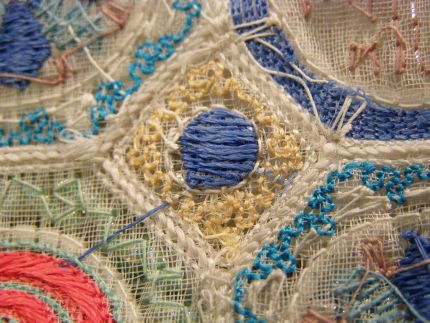
This is a photo of the back of the work.
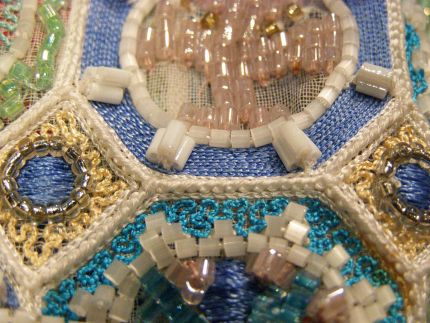
The close-up here shows the embroidery grid better.
Having a piece that is partially constructed shows us better, how darts and seams are handled. The beading is worked right up to the stitching line, and sewn with a zipper foot. Here’s the bodice waist dart….

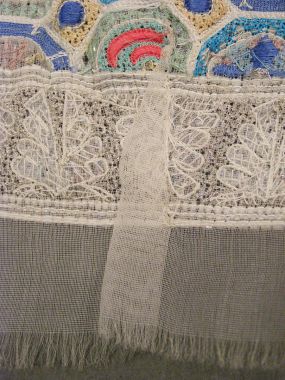
And the dart shown from the inside.
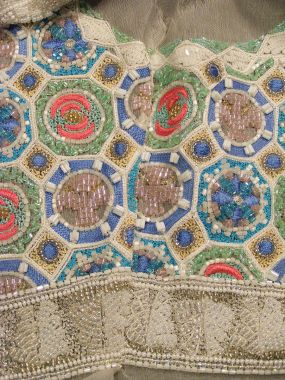
One side seam has been sewn (the other probably would have received the zipper).
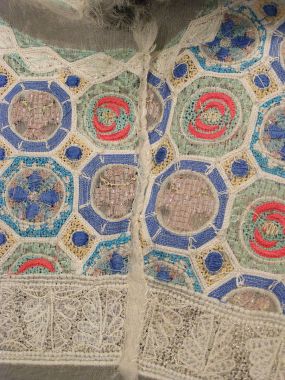
This shows the seam from the inside.
Start your 14-day FREE trial to access this story.
Start your FREE trial today and get instant access to this article plus access to all Threads Insider content.
Start Your Free TrialAlready an Insider? Log in



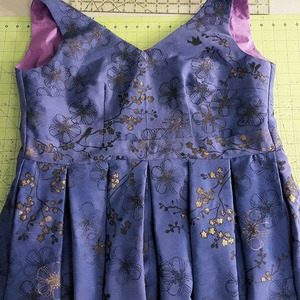

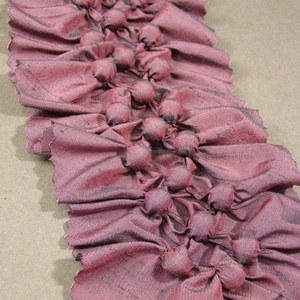
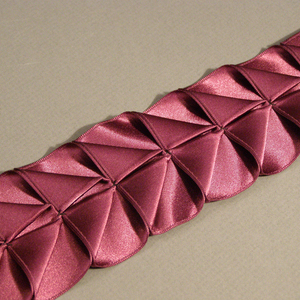
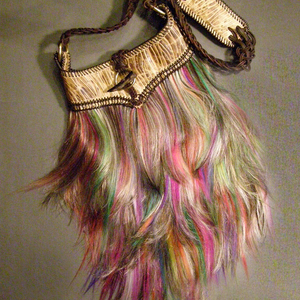


























Mr. King, I'm wondering if, with your abilities, if you are planning to complete a garment from this exquisite piece, or leave it as is?
"Tissue-Weight Wovens" by Mary Ray. Make light work of sewing these airy textiles. Frail material is difficult to work with. I loved to know more. I want to learn more.
Another exquisite garment with clear photos and text.
Your articles stimulate imagination and creative thinking, I
always look forward to them.
Thank You.
Kenneth, you're right. This is really sophisticated work. Thanks for sharing!
A very beautiful example. Thank you Kenneth for showing this. I have learned a lot from this example. Your comments and teaching are always so appreciated. Liz
What a magnificent piece of work and what patience and skill the maker had. Do you know what its origin's are?...Could it be Eastern European? Thank you for your dedication to bringing beautiful objects to our attention and thank goodness for people like you who remind us that there is a beautiful alternative to the $5 and $10 'disposable clothing' world we live in.
Thanks for the comments!
This piece, like the one in the last post, came from the same source. I'm told this was made in India, and the work here is really exceptional. The variety and beauty of the stitches really astonishes.
Im not planning on making a finished garment from this, as I want to preserve it for posterity. The work is so wonderful, it should survive intact.
This does look like the under-bodice of a sari. Beautiful. Is the base fabric silk organza? Hard to tell, but the fabric looks so fragile it's hard to imagine how it holds all the heavy embroidery and beads. Thanks so much for the close-up look.
Kenneth, yet again, you have provided a spectacular piece of work for we mortals to drool over.
If it did come from India, the likelihood is that it was actually worked by a man, as they considered that a womans hands were too clumsy to be entrusted with such delicate work!
Yeah, right! Good job times have moved forward is all I can say.
Now, if I could just get the man in my life to build me a tambour frame, I could get practising with my hook!
Keep on bringing us such lovely pieces, please?
The base fabric for this piece is indeed silk organza. It's stronger than one thinks, and I see it quite a bit when looking at this kind of work...
Kenneth,
I'm sorry that I'm joining this dicussion late, neverthless, the piece is breathtaking and the work astonishing. At first glance I guessed it to be Arabic in origin because of the mosaic-type design, the detailed beadwork and the typical middle-eastern color scheme. But I can also see the Eastern-Indian influence. I immediately recognized the fine tambour embroidery work before reading your commentary and, of course, I was thrilled and fascinated.
I've got a question: It appears that some of the heavily beaded areas might have additional silk organza on the back to help stablilize. Is that the case or not?
Thank you for sharing this exceptional piece. I've loved drooling over all the others you've share as well.
Ymana Johnson
Yumjo, the organza is single-layer all around. On the neckline, there's another layer of organza to stay the neckline to keep the line true, but the body is really only one layer. Silk is an amazingly strong fiber, if stored properly, but of course this garment wouldn't be worn to dig a ditch...